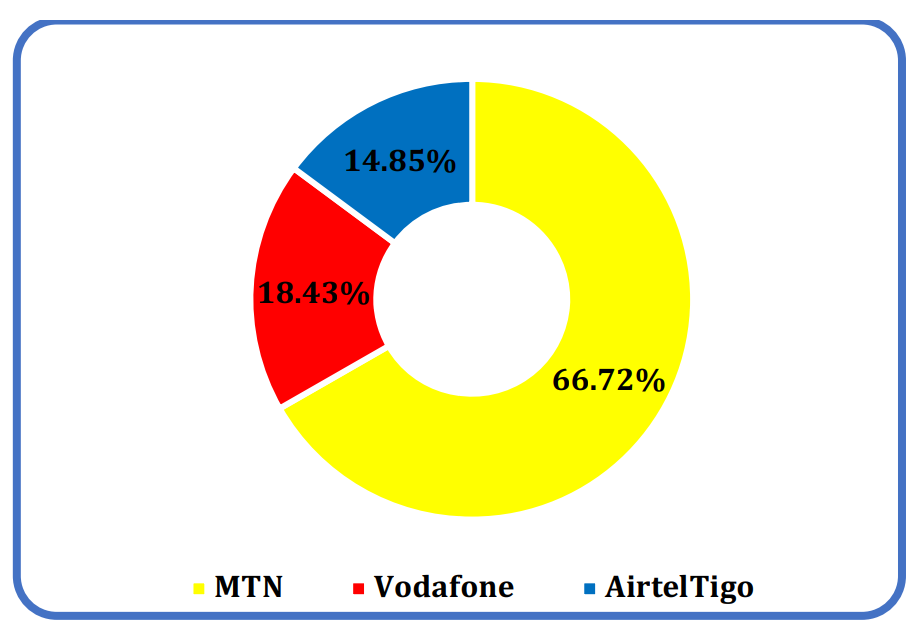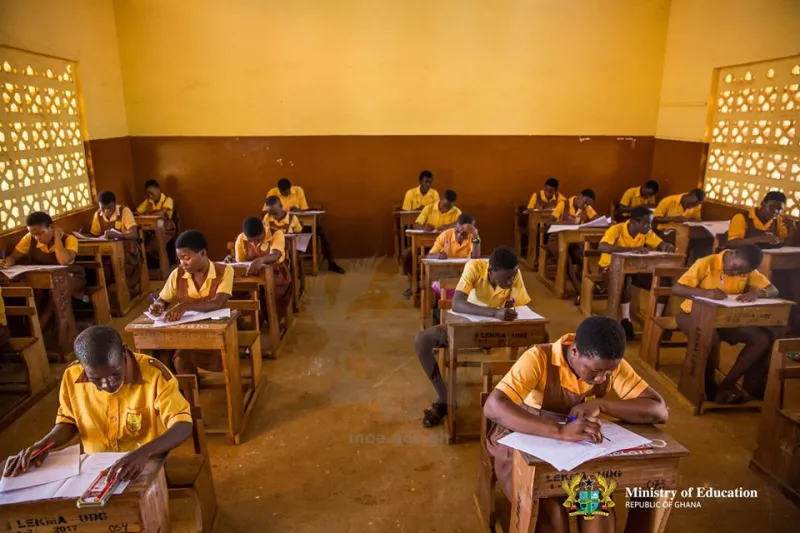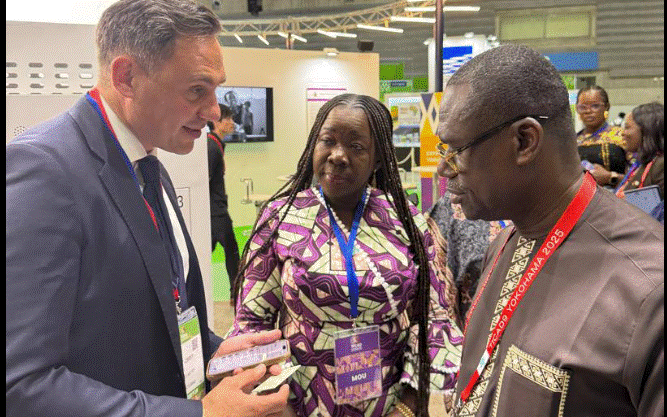
No sooner was he sworn in than Donald Trump, in a series of ‘executive orders’ and memos, unleashed pandemonium in the global aid order.
His 20 January order demanded the realignment of all US foreign development assistance and cooperation efforts with his government’s ‘America First’ mission.
With the order to freeze all US foreign aid programmes, except for a few waivers granted in patches for emergency HIV/AIDS programming and similar work, the Trump–Musk alliance then set about dismantling USAID, the jewel in the crown of America’s international development cooperation system. Analysts expect less than 5% of USAID’s global staff to keep their jobs if ongoing legal resistance fails.
The approach to gutting USAID appears to follow prescriptions outlined in a manifesto produced by a conservative group since disowned by Trump.
With the US accounting for roughly 42% of global humanitarian aid resources, the havoc that has ensued was inevitable. In specific areas like HIV/AIDS prevention and treatment, America’s $5.4 billion (2024) in annual spending (97% of which is slated for overseas programmes) accounts for more than 25% of the global response budget.
Breathless pundits pointed to the roughly 30 million people dependent on aid-procured HIV medicines – a population for whose benefit prices of HIV drugs have fallen from $14,000 per patient per year in 1990 to roughly $96 today partly because of aid. Reports from international newswires warned of 8 million people facing starvation in the Horn of Africa. Governments from Ghana to Jordan scrambled to plug the shortfalls as best as they could.
Despite the raw nerves, a cool discussion is still required
Intellectualising a situation that for millions around the world involves real issues of life and death might come across as insensitive.
However, it is precisely in the midst of fears of impending humanitarian carnage that we must find the courage to address the structural mess that the current, Western-dominated aid system faces, much of which predates Trump, and much of which will continue to unfold long after he has left the scene.
Whilst the news has led with the pain and suffering of the sick and hungry, the global development cooperation system goes beyond humanitarian aid and acute relief: it encompasses a multitude of strategic and tactical ways by which countries support each other to improve the lot of their people. From government-directed foreign direct investment and complex economic diplomacy to shared technology, joint space missions, and infrastructure loans to boost trade, the sprawling development cooperation system can only really be appreciated in its totality.
Global aid is inevitable in a some historical sense
History tells us of the vital importance of development cooperation in the life of every nation. Regardless of hemispheric or geographic orientation, reliance on better-off near and far neighbours to navigate hard times has been so commonplace as to be regarded as an inevitable part of the very notion of internationalism.
Even America had to rely on development assistance in the early days of the Republic. As business historian Mira Wilkins put it:
The new nation borrowed to finance the American Revolution, to assure public credit, and to undertake territorial expansion, namely, the Louisiana Purchase. Before 1795, the foreign debt of the US federal government had been denominated in foreign currencies.
Every country celebrated today as having pulled themselves up by their bootstraps has relied on aid at one point or another in their developmental journey.
Between 1979 and 2007, Japan disbursed four batches of large soft loans to China to aid its development at interest rates sometimes as low as 0.75%. At the peak of this development cooperation programme, Japan was responsible for 60% of China’s external government borrowing for economic purposes. Some at least of China’s rapid industrial diversification must have benefited from these targeted soft loans.
Japan itself had earlier required external concessional financing to fund its development, despite broad scholarly consensus that it prioritised trade concessions over aid. For example, its hydro-dam strategy to secure cheap energy to fuel manufacturing was significantly reliant on World Bank funding.
Similarly, Malaysia, which relied considerably on domestic savings to fuel expansion in national productivity, also depended heavily on multilateral aid from the likes of the World Bank to finance infrastructure growth.
In the words of the Kiel Institute’s Peter Nunnenkamp:
Project loans granted by multilateral agencies such as the World Bank and the Asian Development Bank as well as bilateral donors accounted for a significant share of total debt inflows throughout the 1970s. These funds were mainly used to finance infrastructure projects such as highways, bridges and hydroelectric dam projects, the promotion of which was considered to be an important input for private sector activities.
Nor is the West exempted from this paradigm.
Between 1956 and 1977, the UK underwent 11 IMF programmes, or one every two years, a higher borrowing frequency than countries in Africa like Ghana and Kenya, often berated for their addiction to the IMF.
There are also historical examples of Global South countries providing aid to the Global North: in the late 1940s, Franco-ruled Spain, shut out of the Marshall Plan for Western Europe, resorted to soft loans from Argentina which, in the words of Charles Foltz, helped ‘prop up’ its economy.
Even today, traces of this order remain and flare up during moments of distress in the global economy. In terms of programme size, the largest IMF commitments in history have been to Portugal, Ireland and Greece (the so-called “PIGs”), which received more than 13.5% of their GDP in IMF packages during the 2010–2012 crisis. IMF loans in Africa, by comparison, are consistently below 5% of the recipient’s GDP.
Evidently, aid dependency is not some syndrome limited to hapless countries in Africa or elsewhere in the developing world. History evinces its ubiquity. What is curious is why some countries graduate from chronic aid dependency whilst others remain stuck.
Contestation too is a fact of life
That global development cooperation is inevitable does not mean that its character, composition, basis and structure has not always been contested.
It was because of such contestations that, 20 years after the emergence of the modern development cooperation model in the aftermath of the Second World War and the start of the Marshall Plan, the Pearson Commission was set up to review the World Bank’s work in its function as the pinnacle of the global aid system as it then was.

When the Commission convened in 1968, no one from the Global South had membership except St. Lucian economist Arthur Lewis, who had spent most of his working life in the UK except for a two-year spell advising Ghana’s first President and a stint at the University of the West Indies.
Of the 19 special studies contracted by the Pearson Commission for their report, not a single one focused on an African subject matter. The ‘Global South’ was nominally represented by countries like Turkey, Colombia and Pakistan, but it was clear that the prevalent ideas were primarily Western in origin.
Perhaps this is not surprising since, of the roughly $70 billion in loans approved in the 1960s, $50 billion went to advanced economies.
Despite inventing the euphemistic term ‘development partner’ (thus seeking to dispense with the “donor-recipient” rubric), reactions to the Pearson Report’s recommendation that donor countries should allocate 1% of their GDP for foreign development assistance focused on handouts to poor Global South nations, with some commentators mocking the notion of an ‘international welfare system’.
The emphasis on handouts is captured in this contemporary summary:
At a time when the general mood in the developed countries favors further reducing aid and disengaging from the development problems of the poor countries, the Pearson Report represents an important landmark.
An even more farsighted and perspicacious writer at the time saw clearly that the compositional confusion of what constituted ‘aid’, or, worse, ‘development cooperation’, would in time make the whole idea of setting targets for donor countries ‘meaningless’.
At any rate, the 1% of GDP target was revised to 0.7% and endorsed by the world’s countries at the United Nations in 1970, the year after the release of the Pearson Report.
Five years before the Report’s release, the average giving rate of the biggest donor countries, the so-called Development Assistance Committee (DAC) of the OECD, was above 0.5% of their average GDP. The US level was higher, at 0.6%. Within two years of publication, the rate dropped to 0.2%. For the first time since 1960, the US level dropped below the DAC average, where it has remained ever since.
In fact, not only have the donor countries never hit 0.7% of average GDP since the target was set, they have also never been able to attain pre-Pearson levels. The current average rate across the DAC countries is 0.37%.
When the Berlin Wall came down, there was widespread hope that aid levels would rise in line with a new era of heightened global cooperation. On the contrary, within a decade the average DAC rate had fallen from 0.34% to 0.22% of average GDP.
These facts suggest that from the very beginning, aid has always been given grudgingly. As if to nudge recipients towards graduation. Yet, such graduation remains elusive for many countries in the world, an abiding mystery this essay aspires to unpack.
Hard and soft development
One of the longest-running debates alongside the general liberal elite push for higher aid has been around the question of aid effectiveness. Effectiveness is also regarded as key to resolving the question of why some countries graduate from dependency and others do not.
Very few dispute the propriety of acute humanitarian relief disbursed in moments of emergency, such as after a flood or earthquake. Except from a pacifist standpoint, military aid (which accounts for 12% of total US aid, for instance) rarely comes up in debates about effectiveness. Everything in-between these extremes, however, is fair game for massive disputation.
Within professional development practice circles, the effectiveness debate culminated in a set of principles outlined in the Paris Declaration, focusing on such things as measurability, sovereignty of aid-receiving countries, accountability, minimising duplication, prioritisation, alignment with receiving country systems, predictability, multilateralism, and frontline agency.
In the broader world of policy punditry and mass media commentary, however, one can discern a different set of issues and categorisations. Looking at those countries that have mostly graduated from aid dependence (in its expansive sense, from pure handouts to concessional loans and periodic crisis-bailouts), a view appears to be consolidating in mainstream commentary that foreign economic assistance can be differentiated between resources going into hard development targets like infrastructure, and softer focuses like gender empowerment, vaccination programmes, and ‘capacity-building’ for institutions like the courts and civil service.
Without any explicit formalisation, commentators often differentiate between Chinese loans going into roads, dams and bridges, and European aid going to support press freedom, academic exchanges, and nutrition in schools.
Citing one commentator, such an approach ‘mirrors China’s own development trajectory, which focused on the modernisation of agriculture and extensive public spending in large infrastructure development projects. Strategically, linking its foreign aid focus to its own development experience enables China to promote its state-centred economic development model as a rival to the neoliberal economic development agenda advanced by the West in the Global South’. For a brief moment, some even speculated about a triumphant successor to the Washington Consensus, the ‘Beijing Consensus’.
Some contend that, if poor/developing countries secure enough financial inflows to build out hard infrastructure, as China and South Korea did, they would eventually figure out their own soft development needs.
Despite the complex record in the academic and professional development literature, a very large segment of the mainstream view converges on this position in relation to the experience of the so-called Asian Tigers, the largest and most prominent contingent of countries that modernised and graduated from chronic aid dependency in the twentieth century. The rebound of economic growth and the relative institutional sophistication of the post-Warsaw Pact states in Eastern Europe are also sometimes held out as vindicating this view.
The classical aid paradigm
The simple truth, however, is that chronic aid-receiving countries in Asia, Africa and the Middle East have tended to receive aid of all kinds and shapes for things both hard and soft.
What is definitely also true is that, since the Washington Consensus took hold in the 1980s, and the Structural Adjustment and Economic Reform programmes spearheaded by the IMF and World Bank came into vogue, a tapestry of development assistance has emerged that seeks to weave different forms of support for hard and soft development into a single package – a package purporting to support the entire national vision of aid-receiving countries. World Bank ‘country partnership frameworks’ exemplify and codify this thinking.
One way to look at this phenomenon is that this holistic approach to development cooperation is the maximalist rendition of the Paris Declaration on Aid Effectiveness. It is effectively a tossed salad with too many ingredients drenched with the mayonnaise of jargon, with little regard for taste. Some experts nevertheless argue that, at the level of implementation, the World Bank and others only pay lip service to the real animating logic of Paris.
And yet, because of the very efforts that led to Paris, the principal donor countries (the DAC donors in particular) have had to unify their operations around this model, leading to a dominant, or classical, aid paradigm.
The record shows that since this paradigm started to take hold in the mid-2000s, precious few countries subject to its dictates have successfully graduated from aid dependency to enjoy the fruits of development promised upon enlistment.
The St. Petersburg thesis
The debate over aid design and effectiveness has not been happening in a vacuum. Aid and development cooperation are embedded in the same geopolitical context that has always been the subject of fierce ideological debates throughout our modern history.
As geopolitical fissures deepened amid the conflict in Ukraine, Russia sought to counter the West’s ideational dominance, at least on the summitry plane, with a revamped St. Petersburg International Economic Forum. A veritable Eastern Davos, where debates about the global development paradigm take place in familiarly luxurious settings but with a revolutionary patina. On various panels at the 2023 edition of the forum, the design of a multipolar challenge to Western hegemony in development cooperation snapped into place.
One might contrast this St. Petersburg paradigm with the mainstream successor to the Washington Consensus, the process that has given the world the UN-backed Millennium Development Goals (MDGs) and Sustainable Development Goals (SDGs). Missionary blueprints that are exemplified and codified in the Addis Ababa Action Agenda and its financing apparatus. As I mention again later in this essay, the European Union (EU) has, over time, emerged as the most ardent champion of this normative arrangement, which elsewhere I have christened the classical paradigm.
Those who align with the St. Petersburg worldview contend vigorously and at every opportunity that the Addis Ababa–Brussels (classical) paradigm is neocolonial in origin, imperialistic in orientation, tone-deaf and functionally useless in output and performance.
Even moderate observers have declared Africa, for instance, the ‘graveyard’ of Western development projects.
The rise of multipolar pragmatism
As witnessed in the previous section, there is no shortage of calls to reform the classical aid paradigm, especially in Africa.
Such calls almost never reference the classical/Brussels system’s own, some would say frequently betrayed, norms and principles, such as those enshrined in Paris and Addis Ababa. Increasingly, critics turn to variants of the St. Petersburg thesis, anchored as it is to anti-hegemonic grievance, when proposing a new Global South, developing world, or African approach to development financing/resourcing.
A group that reckons its members as ‘pragmatists’ has emerged asking that we embrace a coming ‘multipolar’ regime in which finance-needy countries and finance-supplying countries can all choose to maximise their national transactional interests.
One must be careful, however, not to conflate St. Petersburg pragmatism with the ‘non-aligned movement’ and the Bandung politics of yesterday, even at the rhetorical level. Nor does pragmatism here simply mean doing business with any club of countries interested in doing business with your country. It is a bit more ideological than that.
It specifically means that regions like Africa should stop bothering with any development cooperation model that is overly paradigm-dependent, rules-driven, and based on comprehensive partnerships around explicitly defined norms and values. More strictly speaking, it amounts to a kind of ‘normlessness’, as can be seen in the analysis of one candid reviewer assessing the experience of Sudan.
It is easy to assume that various revolutionary Sahelian public intellectuals see a similar path for development cooperation in their own backyard following the region’s recent shift away from France to Russia and other multipolar alternatives.
Amid the Trump global aid freeze, the more militant St. Petersburg pragmatist arguments have been diluted by a range of uncritical variants that seem to suggest that Africa and other regions bearing the brunt of the freeze can switch wholesale from a Brussels-style aid paradigm, as represented by USAID, to some kind of multipolar regime without any trade-offs at all.
I find the view to be naive.
If the classical aid paradigm dies, it will leave some corpses
The rising geoeconomic powers, such as the BRICS, have no interest in sustaining the classical aid paradigm.
In that regard at least, Trump, Musk and Rubio are no innovators. Their push to align all aid more explicitly with US foreign policy goals looks very much like a desperate scramble to catch up with the likes of China, the UAE, Singapore, and assorted members of the BRICS club.
In countries where the St. Petersburg logic has long held sway, there has never been a debate about whether international development cooperation should merely serve as an extension of foreign policy. Nor are interlocutors in that tradition squeamish about dabbling in a normless realpolitik where cooperating countries are “equal” only in the sense that each is free to have their own norms and intersect only around the merits of each series of cooperative transactions. Everyone assumes precisely such a state of affairs. Even the UK aid reforms of 2020 that subsumed DFID into the UK Foreign Office had a hint of this logic.
As the world’s economic centre of gravity shifts east, most finance available for development cooperation may flow from countries with no loyalty to the classical paradigm at all. Countries of a St. Petersburg bent. That means, in simple terms, that the decline of the classical paradigm will imply resource-gaps – the ‘corpses’ of what were once live programmes.
Take Singapore, for example. On a per citizen basis, it is three times richer than Greece and about 50% richer than Denmark. While Singapore may purport to invest in international cooperation, its real focus is on expanding its ‘external economy’ on transactional grounds, and not according to the classical Brussels paradigm, even if it likes to pay lip-service to such mantras at conferences and diplomatic cocktail parties. The UAE, which is twice as rich as Greece, does the same. So too does the Chinese development cooperation system as guided by the State Council.
Poorer Greece, on the other hand, beholden to the classical aid paradigm because of its EU-centric Brussels Norms alignment, spends the bulk of its meagre foreign aid resources through the multilateral system defined by the Paris and Addis Ababa (i.e. Brussels) worldview. The divide is thus no longer about a rich North dictating standards to a receptive South per se. It is about new money leaving old values behind.
In a world increasingly beholden to St. Petersburg multipolarity, the flow of development resources heading in the direction of the Chinese, UAE and Singaporean models may well start to eclipse classical flows.
Analysing the effects of such a shift, however, requires a careful look at what the world will lose with the setting of the Brussels sun, and not just what it will be gain in the wake of the St. Petersburg moon.
What the Brussels aid system’s death will leave behind
Of course, emerging donors that embrace the St. Petersburg model would usually have no legacy systems to gut like the US is gutting USAID. Even so, their lack of obligation to various types of soft development causes around the world will still be felt by vulnerable parts of society, of that there is no doubt. The collapse of drug access programmes, nutrition enhancement projects or gender-mainstreaming activities would certainly be felt by some of the most underprivileged people in the world.
Whilst private philanthropy may step in here and there, there are limits to its substitution effect. First, that category today constitutes only a quarter of the Brussels aid bracket. Second, the Brussels paradigm includes extensive state-level plumbing that makes it possible for such soft development aid to be delivered. Private development aid providers lack the political legitimacy and clout to sustain the delivery of social programmes that are highly integrated with national policy systems, which, as readers might recall, is the whole point of the Brussels aid system.
Will a St. Petersburgian shift to hard development save the day?
One could argue that the shift from the Brussels model to a more multipolar development system is likely to also drive more finance to infrastructure spending to stimulate growth in poor countries. And that once this happens, today’s aid-receiving countries will simply pick up the tab for their own antiretrovirals, school meals and gender-equity training programs.
In some fashion, many of those who support the Trump–Musk aid apocalypse incline to various such views.
Look at the situation in Sudan, for instance. The partial demise of the Brussels system is said to be endangering millions of lives. At the same time, there is Russia busily cutting deals to invest in all manner of hard projects. Russia has zero interest in building the capacity of judges and ensuring that schoolgirls in Sudan have menstrual pads.
Some empirical investigators have gone as far as demonstrated that ‘poor governance’ in some African countries correlates with increased Chinese investment, not less.
All for the better, some would say: no foreign country or institution should become entangled in such intimate domestic governance and soft development issues anyway.
If Russia provides funding to rebuild roads and bridges, and the Chinese set up factories, the Sudanese people themselves will wire the soft and hard parts of development together through the ingenuity of their own social organisational endeavour.
Where pragmatism turns to idealism
From the perspective of this essay, this is where the seemingly pragmatic position of the St. Petersburg proponents becomes utopian.
They underestimate the underlying governance issues that the whole development arena has been grappling with for years, regardless of whether one places the emphasis on hard, transactional, investments, or soft, intrusive, development programming.
The issues that the Brussels camp struggled with for decades before Paris and Addis Ababa were present long before the Washington Consensus precipitated the all-encompassing, and highly intrusive, models of development cooperation.
People tend to forget that there was a time when Western donors, and their private commercial banks, too, were just as fine with lending to developing countries to invest in ‘capital formation’ – to build roads, dams, irrigation canals and granaries – as the Chinese are now.
Nigeria’s Kainji dam was financed by a consortium of Western countries. Ghana’s Akosombo dam, commissioned in 1961, and site of what is still its largest power plant, was funded by American capital. France was the financial driver behind the Ethiopia– Djibouti CDE railway. The Lagos mainland bridge was financed with West German resources. Most of Sudan’s foundational power infrastructure was paid for using World Bank cash.
Nor was transactionalism alien to the Western aid paradigm of this era. In fact, one of the concerns that prompted the Pearson Commission was the view that the prevailing Western mode of aid was too transactionally tied to the commercial interests of donor countries.
Even today actors in the Brussels system provide not-insignificant funds for hard investments, typically with a requirement for capital goods to be purchased in the lending country.
However, the point also needs to be made that the first round of African debt, and wider fiscal crises, emerged after such capital injections had failed to catalyse a productivity and capital formation surge. The emergence of the Washington Consensus was, lest we forget, a recognition that hard investments alone, transactional or otherwise, were failing to synergise enough with other softer factors to spark sustainable development.
The St. Petersburg model is already showing cracks
At any rate, the ‘norms-lite’, hyper-transactional, hard-investment-focused approach to development cooperation said to be in the offing as a consequence of a post-imperialist multipolar arrangement is actually already here, and has been for a while.
Apart from the fact that, throughout the Cold War, a lot of development cooperation from East to West had many of the features of that model, the more recent Beijing, Indian, Russian and Brazilian interventions in Africa have had enough of a run to leave clear traces of their own limitations.
China has had a rollercoaster ride in Zimbabwe over the last decade, periodically suspending projects, cancelling mega coal-fired power plants, quibbling over aid tracking and measurement, and protesting heady domestic policies.
Despite a public commitment by China to make Zimbabwe self-sufficient in electricity generation, rolling blackouts have returned with a vengeance after poor financial management of public utilities forced the country to export scarce power to service Chinese debts amidst delays in planned power-plant expansions and greenfield developments.
Governance prerequisites can be stubborn beasts in development
Perhaps it goes without saying that a norms-lite development cooperation model does not in any way minimise the consequences of weak policy governance. Nor does an emphasis on hard investments mean that the planning capacity prerequisites for leveraging such investments can simply sort themselves out.
Ghana is the site of many such lessons. I have been looking at a big dam in the north-eastern town of Pwalugu that the government awarded without tender to a large Chinese company on the basis that Chinese development funds would come. Five years on, after $12 million in advanced payments (and a further $12 million in debt) to the contractor, the site has been abandoned with none of the dam built.
Why? Because problems of poor project design, lack of project bankability and a broken monitoring system were exacerbated by the opacity of this new normless form of development cooperation, where the governance safeguards of the classical aid paradigm, such as transparency, are deemed dispensable.
Programming governance is not the only vacuum being opened by the shift: emphasis is also moving rapidly away from multilateral coordination, a mainstay, at least in theory, of the Brussels system.
In 2021, there were 565 major global actors in the development cooperation arena, almost triple the number in 2000. Their areas of focus have also multiplied massively. In 2019, there were roughly 222,000 transactions across manifold focus areas. When scholars model the interactions among aid actors, countries and focus areas, the resulting network has billions of nodes. Without coordination, the only result is a spaghetti mess.
I concede that, despite all the lip-service to coordination, the Brussels system has been sagging under its own weight and bewildered by its own complexity. But the shift to the St. Petersburg model, lacking as it does even the pretence of a multi-donor engagement structure, simply sidesteps a discussion of the coordination mess; it does not offer much by way of a new path.
Inevitably, the duplications and wastage will worsen as every actor chases after contracts and the less scrupulous ply politicians with kickbacks. Already, there are reports of intense, uncoordinated, middle-power operations in the Horn of Africa involving Gulf states, exacerbating the fragility of the region.
If coordination is to happen at all within countries, then the governance vacuum cannot be widened by ignoring the clear, if hard to enforce, norms of the classical aid paradigm as enshrined in the Paris and Addis Ababa frameworks. My worry is that, so far, the new multipolar players have shown very little interest in propounding new, clear, norms.
Hence my belief that some of the supposedly pragmatic stances on a post-classical aid future are in fact pseudo-pragmatic because they condone utopian visions of a world in which poor countries transacting with bigger countries and corporations, without any operational norms and collective action frameworks, would be able to advance their interests on a quid-pro-quo basis.
St. Petersburg’s apparent failings do not excuse Brussels’ longstanding errors
Attentive observers would have noticed, nonetheless, that the loudest cries against the actions of Trump and Musk have not been from communities within recipient countries. Which is odd: after all, they are said to be the main victims here. Yet virtually all the protests have emanated from the US and Europe.
The reason why protests in recipient countries haven’t been as loud as one would expect, and also why there has even been a surprisingly substantial level of support for the ongoing USAID-gutting on social media in some of these countries, is because the Brussels paradigm has failed to live up to its own norms of accountability to domestic civil society.
For too long the Brussels aid programme was in thrall to elite cliques of insiders specialising in its navigation. Diligent observers have shown how the system serves thin layers of the elite in donor and recipient countries.
In the two decades I have been an active country-level development activist, I have never managed to grasp the arcaneness of the Brussels model. Less activist citizens stand very little chance in such circumstances. No wonder then that so many have been so quick to accept the frightening accounts of USAID’s complicity in evil being painted across social media.
I concede wholeheartedly that the Brussels paradigm has fallen short. But I question the redemptive quality of its likely replacements.
A favourable course for the post-Brussels world requires a new source of norms
As hinted above, we already have a good sense of how those potential substitutes are faring today. For example, it is impossible to track, much less engage with, the development cooperation programme of say, India, in most African countries. Transparency and accountability are not yet the hallmarks, to be honest.
I have spent the last two years trying to crack a bizarre incident where a state-backed gold refinery supposedly funded by the government of India in Ghana has mysteriously been assigned to untraceable private investors. Nobody will say anything no matter how much I pry. In the meantime, the refinery, like a sugar factory also funded by India, remains idle because major gold mines are refusing to use it in light of the shady investment history for fear of risking valuable international certification of their gold.
The bare truth is that a world in which development cooperation projects are not subject to any multilateral governance criteria or coordinated across funders would not necessarily be a world where development funds are spent more efficiently. Those of us who live in developing countries dependent on development finance in any form must bear this in mind.
There can only be one way forward. Country-level actors must take up the responsibility of watching development spending to ensure coordination, prioritisation and waste elimination. Civil society coalitions will be critical in charting a new course of country-level accountability. As some keen observers have noted, the neglected role of citizen groups in providing true, full-cycle, monitoring and evaluation of programmes has been the Achilles heel of the Brussels system.
Merely cheering on the possible emergence of a new, post-imperial, agency-driven, multipolar aid system won’t do much for the success of currently aid-dependent countries, nor would it assure their future prospects of aid graduation.
Because the bare fact of civic disempowerment is the one constant in contemporary aid programs regardless of whichever model – St. Petersburg or Brussels – prevails.
By Bright Simons, Vice President of IMANI Africa
The post Bright Simons: Why the crisis in global aid is bigger than Trump first appeared on 3News.
Read Full Story
















Facebook
Twitter
Pinterest
Instagram
Google+
YouTube
LinkedIn
RSS